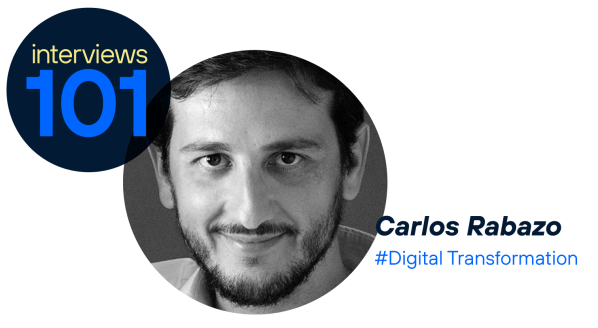Well, the most frequently cited recipe turns out to be Digital Transformation.
And in conversations around the challenge of this digital transformation, the focus on how to address it often falls along one, or at most two, of the three axes listed below:
The cultural axis
We refer to those organisations that question traditional organisational models and promote the adoption of agile methodologies, the training of employees in the data culture and the commitment to customer experience. All of this implies a cultural transformation: breaking down silos, streamlining decision-making, fostering teamwork, eliminating friction… which translates into a different way of working.
The formative axis
We must understand learning -learning- not only as the mere acquisition of knowledge -knowledge- but also as the change of behaviours -behaviours- as a consequence of putting it into practice. The psychologist Albert Bandura argued that most human behaviour is learned through observation and imitation of references or models. And that various factors are involved in this learning process, including adequate motivation: we need to find reasons to put the knowledge we have acquired into practice. Beyond mere necessity, Bandura mentions three levers for motivation: past reinforcement (whether we had similar experiences in the past, and if so, whether we were rewarded or punished for putting this knowledge into practice), promised reinforcement (incentives and benefits that we imagine or that we are promised), and vicarious reinforcement (observing the positive or negative consequences on other people who have put a certain behaviour into practice).
Thus, Bandura’s theories point to the close relationship between learning, motivation and social context, which is why throughout this series we will speak indistinctly of the formative axis or the motivational axis.
The hub of tools and processes. We are referring to those organisations that promote the elimination of manualities by incorporating the intensive use of digital tools in the daily lives of their employees, customers and partners, training them to the best of their ability for a 100% digital world. Streamlining processes, betting on No Code tools, turning their employees into Citizen Developers by training them in Computational Thinking, doing more (and more quickly and with more quality) with less.
The three axes mentioned above correspond to possible routes towards Digital Transformation. But can an organisation successfully drive an agile culture without addressing process automation and making the most of the possibilities of the digital tools at its disposal? Can an organisation, even one with a majority of technically trained employees, really benefit from the digitisation of processes without having driven a cultural change? And let’s not lose sight of our third axis: can all this be tackled without the necessary motivation?
A false dilemma
The above apparent paradox is a false dilemma. It is extraordinarily difficult to adopt an agile mindset or a customer-centric data culture without having provided the different actors with digital tools, training and practice with them (digital reskilling), in accordance with the famous maxim of ‘learning by doing’. Similarly, the challenge of transforming a substantial part of our team into Citizen Developers will not be at all easy if we continue to address day-to-day challenges without applying data culture, without agile methodologies, without putting the customer at the centre. And if all of this is not perceived as the result of a short-term need and is not aligned with the appropriate motivational strategy, it will be very unlikely that the transformation programmes will bear the expected fruits.
However, are we sure that our organisation has addressed the challenge of Digital Transformation by acting simultaneously on the three axes mentioned above, and not just on one or two of them?








